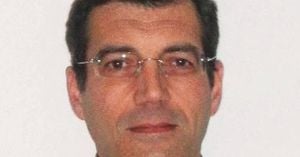On April 28, 2025, a massive power outage swept across large areas of Spain and Portugal, as well as parts of southern France, causing widespread chaos and disruption. The blackout, which began shortly after midday, left millions without electricity and paralyzed public transport systems, traffic lights, and airports.
According to Spain's electricity transmission operator Red Eléctrica, the outage commenced at 11:33 AM Western European Summer Time, causing significant power loss across the Iberian Peninsula. Within minutes, electricity demand dropped dramatically from about 27,500 megawatts to near 15,000 megawatts, indicating the severity of the situation.
Major urban centers such as Madrid, Barcelona, Lisbon, and Seville were among the hardest hit. In Madrid, traffic ground to a halt as traffic lights failed, leading to gridlock and confusion. Local authorities reported that people were trapped in stalled metro trains and elevators, while hundreds of individuals were evacuated from buildings using emergency procedures.
As the crisis unfolded, Spanish Prime Minister Pedro Sánchez convened an extraordinary meeting of the National Security Council to assess the situation. He emphasized the government's commitment to restoring power as quickly as possible while urging the public to refrain from speculation about the cause of the blackout. “The government is working to determine the origin and impact of this incident and is dedicating all resources to resolve it as soon as possible,” Sánchez stated.
In Portugal, Prime Minister Luís Montenegro also addressed the media, indicating that the problem originated in Spain. “Everything points to the major blackout starting in Spain,” he remarked, adding that the exact cause remained unclear. While officials denied any foul play, they did not rule out the possibility of a cyberattack.
Despite the uncertainty surrounding the cause, preliminary investigations suggested that a severe imbalance in the electrical systems might have triggered the blackout. The Portuguese grid operator Redes Energéticas Nacionais (REN) cited a “rare atmospheric phenomenon” that caused significant oscillations in high voltage lines, leading to synchronization failures across the interconnected European network.
As the day progressed, efforts to restore power were underway, but officials warned that full recovery could take between six to ten hours. By late afternoon, more than 35 percent of Spain's power had been restored, with gradual recovery reported in various regions. Portugal also announced that approximately 750,000 customers had their electricity restored.
The blackout disrupted critical infrastructure, forcing the suspension of the Madrid Open tennis tournament, which saw players evacuated from the court as scoreboards went dark. Airports in both countries experienced significant delays, with AENA, the operator managing 46 airports in Spain, reporting that many flights were grounded.
On the ground, emergency services were inundated with calls for assistance. In Madrid alone, firefighters conducted over 200 “elevator interventions,” and health services reported 167 interventions primarily for respiratory issues and anxiety attacks. The chaos prompted many residents to rush to grocery stores to stock up on essentials, causing some stores to run out of supplies.
In addition to the immediate effects on transportation and public services, the blackout raised concerns about the reliability of the electricity grid in both countries. Spain relies heavily on renewable energy, with wind and solar power accounting for about 43 percent of its energy supply. However, experts have warned that an excess of solar generation could destabilize the grid, as seen in recent months with a record number of negative power prices.
The European Commission was in contact with authorities in Spain and Portugal, while the European Council president, António Costa, confirmed that there were no indications of a cyberattack. In light of the situation, both governments activated emergency plans to manage public order and restore services. Spanish authorities asked citizens to minimize travel and stay indoors, while police directed traffic and ensured safety in major urban centers.
As night fell, millions across the Iberian Peninsula remained in the dark, anxiously awaiting news of when normalcy would return. The blackout, described by some as a return to the 19th century, served as a stark reminder of the vulnerabilities in modern infrastructure. The crisis prompted discussions about the need for upgrades and investments in the energy sector to prevent similar incidents in the future.
While power was gradually being restored, the full impact of the outage was still being assessed. Transportation Minister Oscar Puente cautioned that medium- and long-distance train services would likely not resume until at least April 29, 2025. As families and businesses grappled with the aftermath, the focus remained on understanding the causes of the outage and ensuring that such a widespread blackout would not happen again.
In a world increasingly reliant on electricity, the events of April 28, 2025, highlighted the critical importance of a resilient energy infrastructure capable of withstanding unforeseen challenges.





